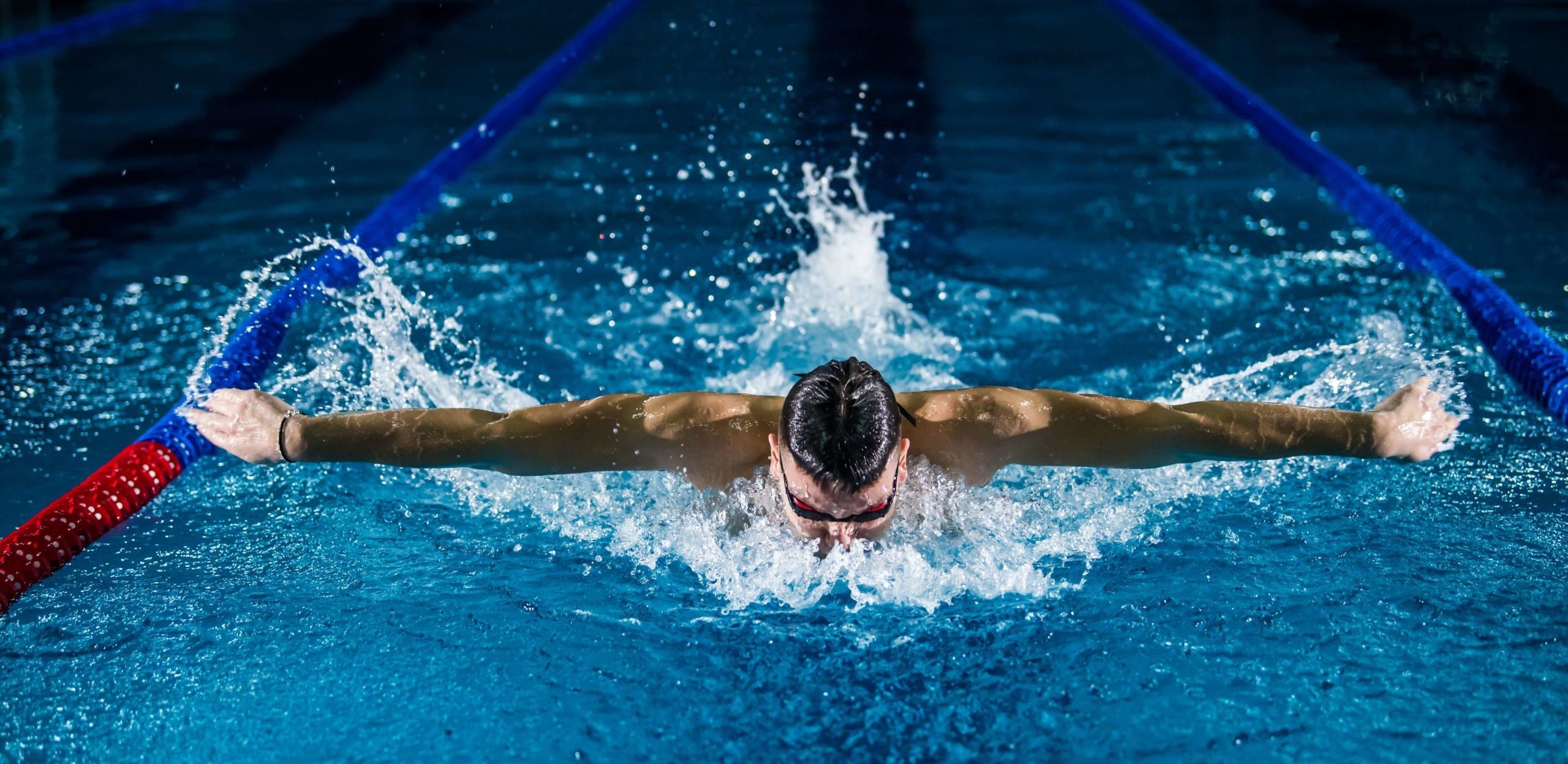If you were inspired by the Tokyo Olympics to get back in the pool, here are some quick tips for preventing and treating shoulder injuries.
Every four years at the Summer Olympics, swimming goes from a sport of relative obscurity to one of the most entertaining competitions in the world. It has made household names out of the likes of Michael Phelps, Katie Ledecky, Caleb Dressel and Missy Franklin.
It also leads to a bump in the sport’s youth participation. The year following an Olympiad can lead to increased pool funding, increased participation, and significant decreases in rates of drowning, according to a study from Grinnell College.
While swimming should save you from the trauma of impact injuries commonly found in other sports, it is not without injury risk. Overuse can lead to “wear and tear” injuries that are just as problematic for your health and fitness goals.
If you were inspired by the feats of gold medals and Olympic records, here are a few tips to helping your shoulders adjust to the rigors of swimming:
1. Focus on Form Before Adding Speed or Resistance
Unfortunately, the four official swimming strokes each include unnatural motions for your shoulders:
- Freestyle, or front crawl, involves your arms pulling down in front, then swinging up behind in a windmill fashion.
- Breaststroke, when done for speed, involves snapping your arms back into a dive after each pull.
- Backstroke, when done too flat, puts problematic pressure on your shoulders with each pull.
- Butterfly can send you to the ice bath even when done properly!
The best way to avoid shoulder injuries in swimming is to practice proper technique, especially as you get tired. Good posture and consistent mechanics will help prevent bad habits that can lead to injury. Start slowly and master the mechanics before adding extra equipment for speed or resistance.
Proper freestyle and backstroke both require a body roll of almost 180 degrees around your center axis. On each stroke, reach toward the wall in front of you, fully extending your arm before placing your hand in the water. As your hand enters the water, dig deep and use your whole arm as a paddle. Your breathing should be balanced and bilateral, along with the rolling motion.
Proper butterfly and breaststroke are mirrored strokes, meaning that both sides of your body do the same thing at the same time. While mechanically challenging, both have a natural rhythm that helps you pull through the water instead of fighting it.
Not sure if you’re practicing good form? Consult a coach, fellow swimmer or YouTube for advice. Ask a friend to watch and offer feedback, or use your smartphone to film and ensure your strokes are balanced.
2. Flexing and Flexibility are Your Friends
One key to joint health is balancing strength with flexibility.
Cross-training by lifting weights is a great way to prepare your body and improve performance. Lifting low weight with high repetitions for your arms, chest and back can greatly improve your pulling power and endurance. Among the most beneficial exercises is a bodyweight circuit of pushups, pullups and situps.
Pair that with stretching and yoga to get the most from your workout.
Yoga strengthens stabilizers and supports muscle groups that are used in swimming. Stretching before and after every workout will help you perform better, recover faster, and prevent injuries. Well-stretched muscles also lengthen over time and contract more quickly when engaged, making you even faster in the pool.
3. Don’t Go It Alone
Quite literally, don’t ever swim by yourself for safety reasons. But when it comes to shoulder health and swimming, you have a team of physical therapists at Body Gears that can help you with all facets of prehabilitation, maintenance and injury recovery.
Identify and reach your goals with Get In Gear, a personalized training program focused on strength, mobility, timing, and facilitation. Functional dry needling is a safe and simple way to treat chronic and acute pain, increasing blood flow to your muscles and releasing painful trigger points to restore normal function. Curative therapy is a way of reversing the physical and psychological aspects of injury and rebuilding confidence.
These are just a few of the services that our highly-trained team can use in getting you ready for the pool. Contact us today at one of our six Chicagoland Body Gears centers to learn more about how we can help you get back to the things that matter most, like swimming for a better life.
Tags: swimming, shoulder injuries






